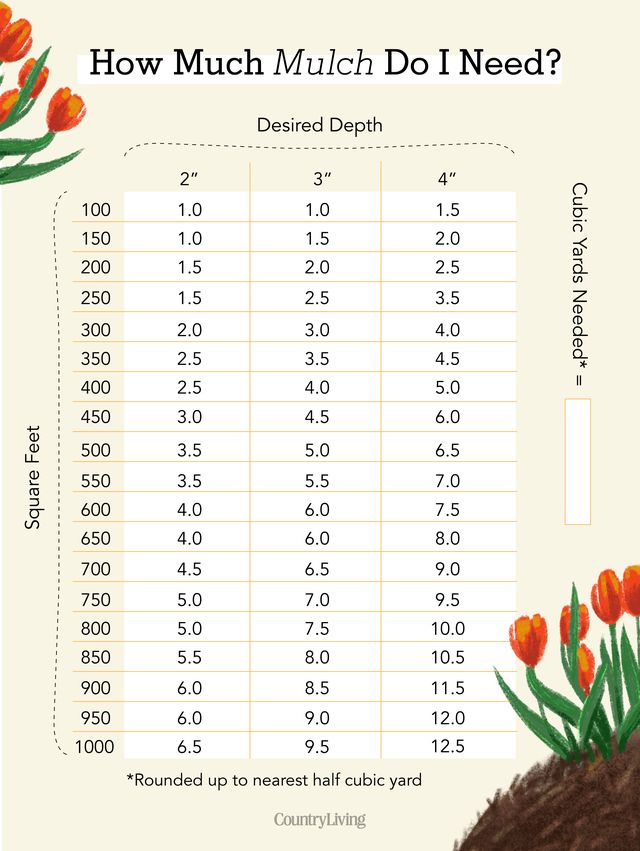Do I Need to Buy More Mulch for My Home Garden?
Mulch is an essential part of a healthy home garden.
It suppresses weeds, retains moisture, and gives an insulating layer to plants’ roots through the winter. With that said, it takes the right amount of mulch (and the right type) to ensure that your garden reaps the benefits that mulch has to offer.
But how much mulch is too much or too little? And when should you buy it and what type?
This post will analyze the ins and outs of buying mulch so that homeowners can strike the right balance. I’ll also spend some time delving into different types of mulch to give you a perspective on what might work best for your home garden.
What are the Functions & Benefits of Mulch for Home Gardens?
For the unfamiliar, you might need a quick recap on mulch and its functions. Mulch is essentially a material that you spread around a plant or cover a soil surface to form a protective layer. A good analogy I’ve seen used before is that of cake and icing – the soil being the cake and the mulch, the icing.
Mulch can be organic or inorganic, both types having their pros and cons.
The Benefits of Mulch for Your Home Garden
- Better moisture retention – Mulch helps the soil in your garden to retain moisture for longer periods.
- Improved nutrient release & absorption – Mulch facilitates a slow-release of nutrients into the soil, which, in turn, prevents vitamin loss.
- Pest & disease resistance – Organic mulch can help make your garden plants more resistant to pests and diseases.
- Provides shade for plant seedlings – Mulch offers shade for seedlings which protects them from too much sun exposure.
- More efficient temperature regulation – A natural insulator, mulch has an innate ability to keep the soil warm in the winter and cool in the summer.
- Natural weed barrier – Since mulch blocks sunlight (hence why it’s good for shading). It also serves as a deterrent for weeds since they can’t get enough sunlight in the presence of mulch.
- Improved soil quality & conditions – Mulch helps to bind sandy soils and open up clay soils. It creates the optimal soil texture for your plants.
- Increase biological activity of your soil – Organic mulch, in particular, provides benevolent micro-organisms and earthworms with food. These organisms release fertilizing compounds back into your soil.
- Recycles waste compounds – Organic mulches such as plant matter (ie. leaves) can be reused so as not to be wasted.
Do You Need to Buy More Mulch?
Depending on the type and thickness, the ‘lifespan” of mulch or the period of effectiveness varies.
Many factors can determine the frequency at which you have to buy mulch, some of which you can or can’t control. You must also ask yourself if it’s purely for aesthetic reasons you feel compelled to mulch or are you seeing the bare ground, which is very undesirable as it allows the soil to dry out and form a hard, impenetrable layer.
For example, weather conditions and sun exposure – two factors you can’t control – influence how often you have to apply additional mulch. You can plan around this, of course, by purchasing the best type of mulch suited for your local region.
The current state of your mulch can also give you some clues as to whether it’s time to buy or replace it. Organic mulch that appears to be or is decomposing, needs a replacement.
Avoiding Dry Mulch
Although popular, I recommend avoiding dyed mulches.
The chemicals that are added to this organic material to achieve a specific color are often unknown and therefore may be toxic to sensitive plants (coal dust has been known to be added to “black mulches” to give it that color. Would you want to breathe in coal dust if you were a plant?
Lastly, there’s the size or aggregate of your mulch. This is related to the type of mulch you buy, but generally, mulch that comes in a shredded form needs more frequent replacement than mulch in a chip form, although.
How to Calculate the Right Amount of Mulch for Your Home Garden?
Everyone’s garden, yours included, will have unique requirements for mulch. But there is a formula for calculating your mulch requirements and it’s essentially this:
Square footage x desired depth / 324 = cubic yards needed.
Taking you back to math class, the square footage is essentially the length x width of your area to be mulched.
Why “324,” you ask?
Well, mulch is sold by the cubic yard, a unit of measurement which covers a 324 square-foot area. You can find the square footage and depth of your backyard by physically measuring the size of your lot by itself (which can be labour-intensive) or with the help of a mobile app.

If you’re on the fence about calculating how much you need to add to your garden, you can always get in touch with a landscape architect like myself for assistance or your local garden center.
Common Types of Mulch for Your Home Garden
As we mentioned above, mulch comes in two broad categories – organic and inorganic. For this article, I’ll focus on the organic kinds. There are many different types of organic mulch, some of which I’d recommend while others, not so much. You’ll find some of my recommendations below:
Mulch Pine Straw
Pine straw, which is fallen dried needles from pine trees, is one of my favorite types of mulch and for various reasons. It’s perfect for acid-loving plants and it may even help acidify more alkaline soils. Pine straw is lighter than bark mulch, which allows for greater percolation of water and the network of needles it creates helps to hold erosion down. It’s also less expensive* than bark (and more beneficial frankly), available in bales that range from 14 to 30 pounds (7-18kg).
*primarily because it is less labor-intensive to apply.
Shredded Bark Mulch
Shredded bark is probably what comes to mind for many people when they think about mulch, and for good reason. It’s widely available, it’s relatively inexpensive and it’s highly efficient.
Shredded bark mulch is particularly effective for slopes and one of its outstanding benefits is its slow rate of breaking down. It may or may not be environmentally friendly depending on where it was sourced from, so you’ll have to double-check its packaging to verify its status.
I recommend shredded bark for its cost-effectiveness or sometimes for very newly installed plantings as it gives a nice instant blanket to the exposed soil.
Leaf Mulch
Leaf mulch or “duff” (remember Homer Simpson’s beer? ☺) might be a lesser-known option for homeowners.
It’s essentially leaf litter – leaves, twigs, stems, bark – the remains of trees that have fallen to the ground.
I consider this to be the ideal type of mulch.
Leaf litter is free of harsh chemicals that lead to soil contamination and more importantly, it’s fully organic, meaning that it is a nutritional powerhouse for your soil. The beauty of leaf litter it’s everywhere there are trees. Some trees produce a slightly better leaf mulch than others. Finely textured trees like Willow oak or locust are a bit faster to add nutrients to soil vs. white or red oak or sycamore. Maple leaves also make an excellent mulch.
Find the Right Amount of Mulch for Your Home Garden
If you’re going to add mulch to your garden, make sure to do it right.
Mulch is your garden’s source of protection and nourishment, but that’s highly contingent on the amount you put, as well as the type you choose.
Fortunately, it isn’t rocket science trying to get the right amount (or type) of mulch in your garden. It just takes some calculation and consideration of benefits offered by different mulch types.
If you plan on hiring a landscaping architect to help with your garden, many of these considerations will be provided for you. In an upcoming post, I’ll dive more into different mulch types as well as techniques for applying them.
Need more tips on mulch or other gardening essentials? Get in touch with me for more answers!






